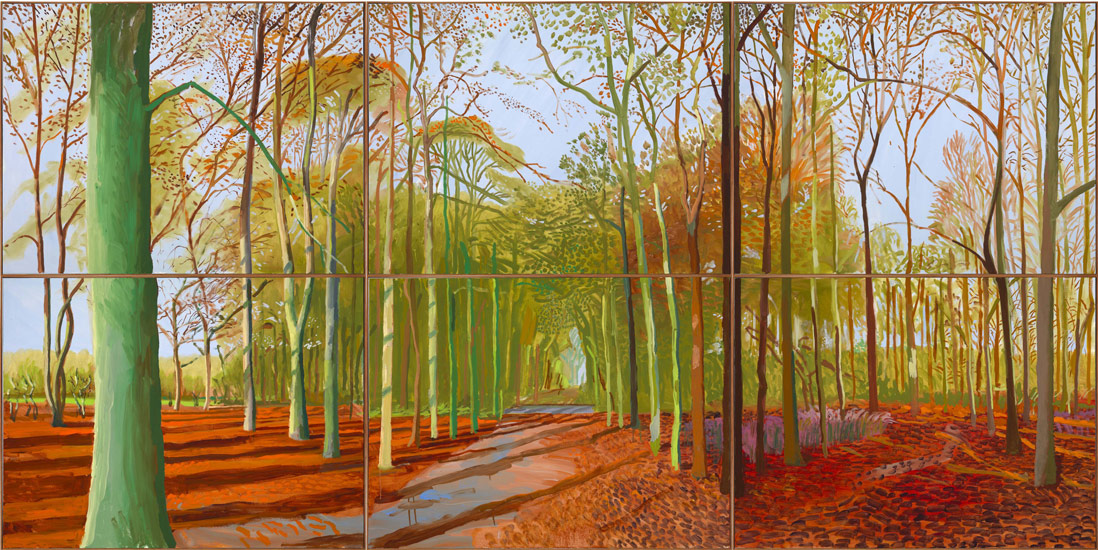
By Richard C. Morais
The moment you walk into the Royal Academy of Art’s exhibit of David Hockney landscapes, you are greeted by Three Trees near Thixendale, four massive canvasses of Yorkshire fields dotted by a trinity of ancient trees, the same view painted over four seasons. The works take your breath away. This is the romantic view of bucolic England, that profound love of country that can be found in the best Michael Powell and Emeric Pressburger films of the 1940s.
But a more fascinating and personal story emerges once you penetrate deeper into this major Hockney exhibition. The first landscapes found in the next room were painted by Hockney in his youth – such asBolton Junction, Eccleshill, of 1956 – and recreate a drizzling, drab Britain out of bleak blues and gun-metal grays. These are not happy pictures.
What follows immediately afterwards, however, are canvasses representing his years in American exile, where the colors of the American West penetrate Hockney and produce massively vibrant panoramas of the Grand Canyons. Colors explode over the canvasses like July 4th fireworks. The exhibit then follows his eventual return to Britain where he again paints the villages and woods of his Yorkshire childhood. It is these landscapes— essentially a 75 year-old man returning to the soil of his ancestors after years of Californian exile— that lie at the heart of this Royal Academy exhibit.
Read the rest of the post here
Don’t miss out! David Hockney RA: A Bigger Picture at the Royal Academy - on view through April 9th.
